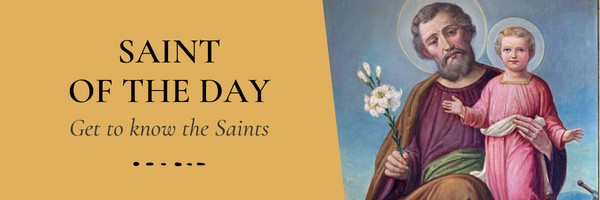We ask you, urgently: don't scroll past this
Dear readers, Catholic Online was de-platformed by Shopify for our pro-life beliefs. They shut down our Catholic Online, Catholic Online School, Prayer Candles, and Catholic Online Learning Resources essential faith tools serving over 1.4 million students and millions of families worldwide. Our founders, now in their 70's, just gave their entire life savings to protect this mission. But fewer than 2% of readers donate. If everyone gave just $5, the cost of a coffee, we could rebuild stronger and keep Catholic education free for all. Stand with us in faith. Thank you.Help Now >
Libraries
FREE Catholic Classes
Libraries, that is to say, collections of books accumulated and made accessible for public or private use, were known to the ancients before the coming of Christ. Probably the most ancient library of which we have any precise knowledge is that of Tello in Mesopotamia, discovered through the excavations of M. de Sarzec and now in great part removed to the Louvre. It seems to have consisted of more than 20,0000 tablets inscribed with cuneiform writing and belonging to the time of Gudea, ruler of Lagash, about 2500 B.C. Still more extensive was the royal library of Nineveh, formed by Sargon, King of Assyria from 722 to 705 B.C., and by his great-grandson Ashurbanipal (668 to 628 B.C.). The latter monarch sent scribes to the ancient cities of Babylonia and Assyria, where libraries existed, to make copies for him of rare and important works, and it seems certain that the collection comprised texts, impressed of course upon clay tablets, dealing with every branch of learning and science known to the wise men of his day. More than twenty thousand of these tablets have been brought to Europe and are now preserved in the British Museum. All the more important texts are marked with a formula attesting that they belong to the palace of Ashurbanipal, and the formulas concludes with an imprecation interesting to compare with those so often fount in the manuscripts of medieval libraries: "Whosoever shall carry off this table, or shall inscribe his name upon it side by side with mine own, may Ashur and Belit overthrow him in wrath and anger, and may they destroy his name and posterity in the land" (Wallis, Budge, and King, "Guide to Babylonian and Assyrian Antiquities", 1908, p. 41). In Egypt collections of papyrus rolls must undoubtedly have been made, though the more perishable nature of the material has not permitted any considerable remains to be preserved from the earlier ages of Egyptian history. Of collections of books among the Jews little is known, though certain passages in the Historical books of the Old Testament (e.g., 2 Samuel 1:18 ; 1 Kings 11:41 ; 14:19 ; 15:23 , etc.) suggest that there must have been repositories where books might be consulted. Moreover, we find in II Mach., ii, 13, a distinct statement that Nehemias founded a library and "gathered together out of the countries, the books both of the prophets, and of David, and the epistles of the Kings, and concerning the holy gifts."
With regard to pagan Rome and Greece we have more precise evidence. Pisistratus is said to have formed a library which was carried off to Persia by Xerxes and afterwards restored. Aristotle, the philosopher, as his writings prove, must certainly have had some sort of library at his command, and this collection, after coming to Athens, is said to have been ultimately take by Sulla to Rome. But by far the most famous libraries of the Greek world were those of Pergamum and Alexandria. The former, which had been formed by the kings of the family of Attalus from about the year 200 B.C., must have been a very remarkable collection. Modern archaeological exploration has identified the site of this library with certain rooms in the precincts of the temple of Athene (see Conze in the "Sitzungsberichte" of the Berlin Academy, 1884, 1259-70). As for the books themselves, we learn from Plutarch that two hundred thousand volumes, or rather rolls, were removed by Mark Anthony to Alexandria and given to Cleopatra to replace the library which had been accidentally destroyed by fire in Julius Caesar's Egyptian campaign. The library so destroyed, which was known as that of the Musaeum, was formed by Ptolemy Philadelphus about 260 B.C. It is to this library that the legend attaches of the origin of the Septuagint, as recorded in the apocryphal, but very ancient, "Letter of Aristeas". According to this legend, Demetrius Phalereus, the keeper of the library, advised his master, King Ptolemy, to endeavour to obtain for it a translation of the Law of the Jews. Envoys were accordingly dispatched to the High Priest Eleazar of Jerusalem, who sent seventy (or, more exactly, seventy-two) scholars to Alexandria to make the Greek version required. the work was completed in seventy day, and the translation was read aloud by Demetrius and approved as final.
The "Musæum" (i.e., building consecrated to the Muses), which contained this, the older of the two libraries, seems to have been located within the precincts of the palace, but the other, of later date, was formed in connection with the temple of Serapis, hence called the Serapeum. Much havoc was wrought among its treasures when Bishop Theophilus made his attack upon pagan worship at Alexandria in A.D. 390, and whatever remained of the library must have perished after the incursion of the Arabs in 641. although Polybius, writing in the second century before Christ, speaks (xii, 27) as though libraries would naturally be found in any large town, it is only in the last years of the Roman Republic that we hear much of libraries in Rome itself. At first these collections were in private hands -- Cicero, for example, seems to have take much pains in acquiring books -- but, after an unfulfilled project of Julius Caesar to form a library for public use, C. Asinius Pollio carried this idea into execution a little later by means of the spoils he had obtained in his Illyrian campaign 39 B.C. The Emperor Augustus himself soon followed the same example, and we hear of the collections of both of Greek and Latin Books formed by him, first in the Porticus Octaviae, which he restored about the year 33 B.C., and, secondly, within the precincts of the temple of Apollo on the Palatine, dedicated in 28 B.C. From this time forth public libraries multiplied in Rome under the imperial patronage of Tiberius and his successors, until they numbered, it is said, as many as twenty-six in all. From allusions in such writers as Ovid, Horace, and Aulus Gellius, it seems probable that these libraries, for example that of the Palatine Apollo, were furnished with copies of books on all subjects, and that soon as a new work of any well-known writer was given to the world the Roman libraries acquired it as a matter of course. We also know that they were administered by special officials, and that they served as places of resort for literary men, while one or more of them -- notably the Bibliotheca Ulpia in the forum of Trajan -- were used a depositories for the public archives.
At the time that Christianity appeared upon the scene in Rome, it is interesting to learn from Seneca how firm a hold the fashion of maintaining libraries, either public or private, had taken of Roman society. "What", asks Seneca, "is the use of books and libraries innumerable, if scarce in a lifetime the master reads the titles? . . . Forty thousand books were burnt at Alexandria. I leave to others to praise this splendid monument of royal opulence . . . . Procure as many books as will suffice for use, but not one for show. . . . Why should you excuse a man who wished to possess book-presses inlaid with arbor-vitae wood or ivory, who gathers together masses of authors either unknown or discredited, and who derives his chief delight from their edges and their tickets? You will find, then, in the libraries of the most arrant idlers all that orators or historians have written -- bookcases built up as high as the ceiling. Nowadays a library takes rank with a bathroom as a necessary ornament of a house. I could forgive such ideas, of they were due to extravagant desire for learning. As it is, these productions of men whose genius we revere, paid for at a high price, with their portraits ranged in line above them, are got together to adorn and beautify a wall" (De Tranquil. Animi, xi).
These were the fashions that prevailed in the more cultured circles of the roman Empire at the time when Christianity began its life-and-death struggle with paganism. the use of books, even if attended with a certain amount of shallow affectation, was not a weapon which the Church could afford to neglect. In itself the accumulated learning of past ages was a good influence, and the teachers of the new faith were not slow in striving to enlist it on their side. In any case some small collection of books was needed for the church services which seem from the very beginning to have consisted in part -- as does the Divine Office of the present day -- of readings from the Old and New Testaments, and from works of Christian instruction and edification. In this way every church that was founded became the nucleus of a library, and we need not be surprised to find St. Jerome counselling Pammachius (Ep. xlix,3) to make use of these collections ( ecclesiarum bibliothecis fruere ), and apparently assuming that wherever there was a congregation of the faithful suitable books would be available. But there must, of course, have been certain centres where, on account of their position, antiquity, or the exceptional generosity of benefactors, more important accumulations existed. Of these the earliest known to us is the library formed at Jerusalem, principally by Bishop Alexander, about the year 250, and containing, as Eusebius attests, a number of letters and historical documents (Hist. Eccles., VI, xx). Still more important was the library of Caesarea in Palestine. This was collected by the martyr Pamphilus, who suffered in the year 308, and it contained a number of the manuscripts which had been used by Origin (Jerome, In Titum, III, ix). At about the same period again we hear that, in the persecution which devastated Africa (303-304), "the officers went to the church at Cirta, in which the Christians used to assemble, and they despoiled it of chalices, lamps, etc., but when they came to the library [ bibliothecam ], the presses [ armaria ] were found empty" (see appendix to Optatus).
Julian the Apostate, in 362, demanded that the books formerly belonging to George, the Arian Bishop of Alexandria, including "many philosophical and rhetorical works and many of the doctrines of the impious Galileans ", should be sent him for a library formerly established by Constantius in the imperial palace ( Julian, Epist. ix). On the other hand, when St. Augustine was dying, "he directed that the library of the church and all the books should be carefully kept for posterity forever", and "he bequeathed libraries to the church containing books and treatises by himself or other holy persons " (Possidius, "Vita Aug.", n.31). In Rome it would seem that Pope Damasus (366-384) built a record-office ( archivium ) which, besides being the depository of official documents served also as library and chancery. It was connected with the Basilica of St. Lawrence , on the façade of which was an inscription which ended with the three following lines:
Archivis fateor volui nova condere tecta.Addere praeterea dextra laevaque columnas.
Quae Damasi teneant proprium per saecula nomen.
("I confess that I have wished to build a new abode for archives and to add columns on the right and left to preserve the dame of Damasus forever.")
It is no doubt this building which St. Jerome refers to as "chartarium ecclesiæ Romanæ". De Rossi and Lanciani conjecture that Damasus, following the model of one of the great libraries of Rome, which in its turn had imitated the arrangement of the famous library of Pergamum, had first build a basilica dedicated to St. Lawrence and then added on the north and south sides a colonnade from which the rooms containing the records would be readily accessible (Lancianai, Ancient Rome, pp. 187-190). Whether this building did or did not ever strictly deserve the name of a library, we have evidence that Pope Agapetus (535-36) set about the erection of another building on the Coelian Hill intended for the keeping of books and afterwards known as the Library of St. Gregory. There, at any rate, an inscription was to be read in the ninth century speaking of the long array of portraits which adorned the walls and, amongst the rest, of that of Pope Agapetus:
Hos inter residens Agapetus jure sacerdosCodicibus pulchrum condidit arte locum.
("Mid these by right takes Agapetus place, who built to guard his books this fair abode.")
The celebrated Cassiodorus, who had been the friend of Agapetus, withdrew from the world in his declining years and gathered round him a religious community at Vivarium, in Southern Italy. There he formed a library as an adjunct of primary necessity for such an institute. Further, he enjoined upon the brethren that if they met with any book which he wanted they should make a copy of it, "that by the help of God and their labour the library of the monastery might be benefited" (De Inst. Div. Lit., viii). Cassiodorus also tells us a good deal about his library contrivances.
But at the break-up of the civilization of the Roman Empire the great influence which contributed more than anything else to preserve in the West some scattered remnants of the learning of the classical period was undoubtedly monasticism, and in particular that form of monasticism which was identified with the Rule of St. Benedict . Even in Africa, as the rule of St. Pachomius and the writings of Cassion clearly show, the maintenance of the ideal of coenobitical life was in some measure dependent upon the use of books. St. Pachomius, for example, enjoined that the books of the house were to be kept in a cupboard in the thickness of the wall. Any brother who wanted a book might have one for a week, at the end of which he was bound to return it. No brother might leave a book open when he went to church or to meals. In the evening the officer called the "second" -- that is the second in command -- was to take charge of the books, count them, and lock them up (see P.L., XXIII, 68, and cf. Butler, "Palladius", I, 236). we know from a letter of St. Augustine's that at Hippo even the nuns had a library, and that it was the duty of one of the sisters to distribute and then to collect the books at the hours set apart for reading. Nor could the large place that study -- but more particularly the study of the Scriptures -- played in the lives of ascetic women at the close of the fourth century, be more clearly illustrated than in the story of St. Melania the younger, the friend of St. Augustine and St. Jerome, who made it a rule to spend daily a prescribed time in reading, and whose labours as a scribe were long renowned. But of all the written documents which have influenced the preservation of books, the text of the Rule of St. Benedict is the most important. Upon this is chiefly based that love of learning distinctive of the great monastic orders: "Idleness", says the Rule, "is an enemy to the soul, and hence at certain times the brethren ought to occupy themselves with manual labour and at others with holy reading . . ." And, after specifying the hours to be devoted to reading at various seasons, the Rule further lays down:
During Lent let them apply themselves to reading from morning until the end of the third hour. . . An in these days of Lent let each one receive a book from the library and read it all through in order. These books are to be given out at the beginning of Lent. Above all let one or two seniors be appointed to go round the monastery at the hours when the brethren are engaged in reading and see that there be no slothful brother giving himself to idleness or to foolish talk and not applying himself to his reading, so that he is thus not only useless to himself but a distraction to others. If such a one be found (which God forbid) let him be corrected once and a second time,and the Rule adds that if all this be ineffectual, the delinquent is to be chastised in such a way as to strike terror into others.
That these principles were fully taken to heart, and bore fruit in the respect shown for books and in the zeal displayed to acquire them, was nowhere more clearly proved than in England. The whole life of the Venerable Bede might serve to illustrate this theme. But it is Bede who tells us from first hand knowledge of Benedict Biscop, Abbot of Wearmouth, who, having visited Rome in 671, "brought home not a few books of all-divine erudition, either bought for a fixed price or given hem by the kindness of friends; and when on his return he came to Vienne he received those which he had bought and entrusted to his friends there" (Hist. Abbat., iv). In 678 he paid another visit to Rome and "brought home a multitude [ innumerabilem copiam ] of books of every kind". In his last illness Benedict Biscop gave directions that the very noble and complete library which he had brought from Rome as necessary for the instruction of the Church, should be scrupulously preserved entire and neither suffer injury through want of care nor be dispersed (Hist. Abb., xi). It was from this collection, which was doubled by the energy of Ceolfrid his successor (Hist. Abb., xv). It was from this collection, which Ceolfrid enriched with three new copies of the Vulgate and with one of the Itala, that the famous Codex Amiatinus was taken, which Ceolfrid on a later occasion carried with him to Italy as a present for the pope. This manuscript, now in the Laurentian Library in Florence, has been described as "perhaps the finest book in the world" (White in "Studia Biblica," II, 273), but it seems not to have been the work of native scribes but of Italians brought over to England.
Although Jarrow had not itself a great scriptorium with a staff of trained copyists -- such as, for example belonged to Lindisfarne, which followed Irish traditions, and to Canterbury, where the dominant influence was Italian -- still, through Archbishop Egbert, whom Bede loved and visited at York, Ceolfrid's library must have exercised a profound influence upon Alcuin, and through him again upon the scholarship of all Western Christendom . Alcuin was the librarian of the fine collection of books which Egbert had formed in the monastery at York, and in one of his poems he gives a rather florid account of its contents ( Migne, P.L., CI, 843) which has been described as the earliest catalogue of any English library. If we could trust this list, the collection was really one of extraordinary range, including, not merely the best-known of the Latin Fathers, but Athanasius, Basil, and Chrysostom, among the Greeks, and besides these a certain number of historians, with philosophers like Aristotle and Boethius, with the most representative of the Latin classics and a fair sprinkling of grammarians. When Alcuin became the trusted adviser of Charlemagne, that great monarch's influence was everywhere exerted to foster the spread of learning and the accumulation of books. In an ordinance of 789, Charlemagne made provision for the setting-up of schools for boys in which he directed that "in every monastery and cathedral [episcopium]" they were to learn "the psalms and canticles, plain chant, the computus [or regulation of the calendar] and grammar". And he adds, "Let them also have Catholic books well corrected."
All this, directory or indirectly, must have given an immense stimulus towards the formation of libraries in Western Europe. Neither can we leave out of account the great influence which had been exerted at a somewhat earlier period by St. Columban and the Irish missionaries who settled at Luxeuil in France, at St. Gall in Switzerland, at Bobbio in Italy, at Wurzburg in Germany, and in many other places. Still as at St. Gall, for example, the Benedictine Rule often supplanted the Columban, and it was in its Benedictine days that the Swiss abbey attained it greatest renown as a center of learning, and formed the library which still exists. Many, however, of its most precious volumes were at one time removed to Reichenau as a measure of safety, and they seem not to have been all returned to their owners when quiet was restored. At the same time there is abundant evidence for the existence of a system of lending manuscripts by one house to another among friendly monasteries, for the purpose of transcription and collation. This latter process may often be traced in the copies which still survive: for example, two of our oldest manuscripts of Bede's "Ecclesiastical History" have evidently been collated, and the readings of one transferred to the other.
The most famous libraries of the Carlovingian period were those of Fulda, Reichenau, Corvey, and Sponheim in Germany, and those of Fleury, St-Riquier, Cluny, and Corbie in France. the library of Fulda, under the great scholar Rhabanus Maurus, was regarded as the best equipped in Christendom, and a contemporary speaks of the books he was there as "almost countless". Even at the beginning of the sixteenth century the abbey still possessed nine hundred volumes of manuscripts, most of which seem to have been destroyed or scattered in the Thirty Years' War. In the case of Reichenau we still possess the catalogue made by the librarian, Reginbert, before A.D. 831, which enumerates over 500 works contained in 256 volumes. All the libraries just mentioned owed directly or indirectly a good deal to the support of Charlemagne. In southern Italy the Abbey of Monte Cassino , the cradle of Benedictine monasticism, well illustrates the perils to which books were exposed owing to the wildness of the times. After it had been demolished by the Lombards in the sixth century, the monastery was rebuilt, and a new library painfully brought together. But in the ninth century came the Saracens, and when the abbey was despoiled the library perished in the flames. None the less, the monks set to work once more to acquire books and to make new copies, and this collection of manuscripts, which still survives, is among the most remarkable in Italy.
In Spain, at an earlier date, we gain some insight into the ornamentation of a well-appointed library from certain verses written by St. Isidore of Seville (600-636) to inscribe upon the portraits which hung over his book-presses. Upon the door of the room were also displayed another set of verses as a warning to talkative intruders, the last couplet of which runs:
Non patitur quenquam coram se scriba loquentem;Non est hic quod agas, garrule, perge foras.
Which may be rendered:
A writer and a talker can't agree;Hence, idle chatterer; 'tis no place for thee.
Speaking of Western Europe as a whole, we may regard it as an undisputed principle throughout the Middle Ages that a library of some sort was an essential part of every monastic establishment. "Claustrum sine armario, castrum sine armamentario", ran the adage; that is to say, a monastery without a library is a fort without an armoury. In all the developments of the Benedictine Rule, regulations of some kind are laid down for the use of books. We may quote, for example, the directions given by Lanfranc for the annual calling-in of library books on the first Sunday of Lent. The monks are bidden to bring back all books to the chapter house, and thereupon, "let the librarian read a document [ breve ] setting forth the names of the brethren who have had books during the past year; and let each brother when he hears his own name pronounced, return the book which has been entrusted to him for reading, and let him who is conscious of not having read the book through which he has received, fall down upon his face, confess his fault, and pray for forgiveness. And let the aforesaid librarian hand to each brother another book for reading; and when the books have been distributed in order, let the aforesaid librarian in the same chapter put on record the names of the books and of those who receive them."
J.W. Clark gives a summary of the arrangements peculiar to the different orders. Both the Cluniacs and Benedictines, he says, put the books in charge of the precentor, and often also styled armarius , and there is to be an annual audit and registration similar to that just described. Among the later Benedictines we also find a further regulation that the precentor is to keep all in repair and personally to supervise the daily use of the manuscripts, restoring each to its proper place when done with. Among these later Benedictine rules, as found, for example, at Abingdon at the end of the twelfth century, first appears the important permission to lend books to others outside the monastery on receipt of an adequate pledge. The Carthusians also maintained the principle of lending. As for the monks themselves, each brother might have two books, and he is to be specially careful to keep them clean. Among the Cistercians a particular official has charge of the books, about the safety of which great care is to be taken, and at certain times of the day he is to lock the press. This last regulation is also observed by the Premonstratensians, who further require their librarian to take note of books borrowed as well as books lent. Finally, the Augustinians, who are very full in their directions regarding the use of the library, also permit books to be lent outside, but insist much on the need of proper security (see Clark, "Care of Books", 58-73).
The importance of the permission to lend consists, of course, in this: that the monasteries thus became the public libraries of the surrounding district and diffused much more widely the benefit afforded by their own command of books. The practice no doubt involved much risk of loss, and there was a disposition sometimes manifested to forbid the lending of books altogether. On the other hand, it is clear that there were those who looked upon this means of helping their neighbors as a duty prescribed by the law of charity. Thus, in 1212, a synod held in Paris passed the following decree :
We forbid those who belong to a religious order to formulate any vow against lending their books to those who are in need of them; seeing that to lend is enumerated among the principal works of mercy . After due consideration let some books be retained in the house for the use of the brethren; but let others according to the decisions of the abbot be lent to those who are in need of them, the rights of the house being safeguarded. In future no penalty of anathema is to be attached to the removal of any book, and we annul and grantabsolution from all anathemas of the sort." (Delisle in "bib. de l'Ecole des Chartes", Ser. 3, I, 225).It is noteworthy, also that in this same thirteenth century many volumes were bequeathed to the Augustinian house of St. Victor, Paris, on the express condition that they should be so lent. No doubt most of the lending was for the benefit of other monasteries, either for reading or, still more often, for the purpose of making a copy. Against the dangers thus incurred it would seem that some protection was sought by invoking anathemas upon the head of the faithless borrower. How far excommunications were seriously and validly enacted against the unlawful detainers of such volumes is a matter of some uncertainty, but, as in the case of Ashur-ban-i-pal's cuneiform tablets, the manuscripts of medieval monasteries frequently contain on the fly-leaf some brief form of malediction against unjust possessors or detainers. For example, in a Jumièges book we find:
Should anyone by craft or any device whatever abstract this book from this place [Jumièges ] may his soul suffer in retribution for what he has done, and may his name be erased from the book of the living and not be recorded among the Blessed.But in general such formulae were more compendious as, for example, the following found in many St. Alban's books: "this book belongs to St. Alban. May whoever steals it from him or erases his inscription of ownership [ titulum deleverit ] be anathema. Amen."
The high value set on books is also emphasized by the many decrees enjoining care in their use. "When the religious are engaged in reading", says an order of the General Benedictine Chapter, "They shall, if possible, hold the books in their left hands, wrapped in the sleeve of their tunics and resting on their knees, their right hands shall be uncovered, with which to hold and turn the leaves of the aforesaid books" (Gasquet, "Old English Bible", 29). Numberless other appeals recommending care, tenderness and even reverence, in the treatment of books might be quoted from medieval sources. In the "Philobiblon" of Bishop Richard of Bury we have a whole treatise upon the subject, written with an enthusiasm which could not have been exceeded by a nineteenth-century bibliophile. He says, for example (chap. xvii): "And surely next to the vestments and vessels dedicated to our Lord's Body, holy books deserve to be rightly treated by the clergy, to which great injury is done so often as they are touched by unclean hands." This care naturally extended to the presses in which the books were permanently lodged. The Augustinians, in particular, had a formal rule that "the press in which the books are kept ought to be lined inside with wood, that the damp of the walls may not moisten or stain the books", and devices were further suggested to prevent the books from being "packed so close as to injury each other, or delay those who want to consult them" (Clark, "Care of Books", 71).
Still, the monastic system did not until much later make provision for any separate room to be used as a library. It was in the cloister, in which little alcoves called "carrels" were fitted up, securing a certain amount of privacy for each student, that the literary work of the house, whether in reading or transcribing, was mainly done. The result of this system was that the books were not kept all together but preserved in presses in different parts of the building. At Durham, for example, "some were kept in the church, others in the 'spendiment' or treasury, and others again in the refectory, and in more than one place in the cloister " (Gasquet, "Old Eng. Bible", 10). this scattering of the books was the more likely to happen because, from the very nature of the case, a collection of volumes written by hand and kept up only by limited monastic resources could never be very vast. Until the art of printing had lent its aid to multiply books and to cheapen them, a comparatively small number of cupboards were sufficient to contain the literary treasures of the very largest monastery. At Christ Church, Canterbury, Henry de Estria's Catalogue of about the year 1300 enumerates 3000 titles in some 1850 volumes. At Glastonbury in 1247 there were 500 works in 340 volumes. The Benedictines at Dover in 1389 possessed 449, while the largest English monastic library, so far as is known to us, viz., that at Bury St. Edmunds, at the beginning of the fifteenth century, contained 2000 volumes.
The practice just referred to, of scattering books in different presses and collections, was probably also much influenced by the custom of lending, or allowing outsiders to consult, books, upon which something has previously been said. Naturally, there will always have been volumes which any community, monastic or collegiate, reserved for the exclusive use of its members. Liturgical books and some ascetical treatises, particular copies of the scripture, etc., will have belonged to this class, while there will have been divisions even among the books to which the outside world had access. The following passage, for example, is very suggestive. Thomas Gascoigne says of the Franciscans at Oxford about the year 1445: "They had two libraries in the same house; the one called the convent library, and the other the library of the schools ; whereof the former was open only to graduates; the latter to the scholars they called seculars, who lived among those friars for the sake of learning". All this must have been very inconvenient, and it is not surprising that in the course of the fifteenth century the desirability of gathering their library treasures into one large apartment where study might be carried on occurred to the authorities of many monastic and collegiate institutions. During the whole of this period, therefore, libraries of some pretensions began to be build. Thus, to take a few examples, at Christ Church, Canterbury, a library, 60 feet long by 22 broad, was built by Archbishop Chichele, between 1414 and 1443, over the Prior's Chapel. The library at Durham was constructed between 1416 and 1446, by Prior Wessyngton, over the old sacristy ; that at Cîteaux, in 1480, over the scriptorium , or writing-room, forming part of the cloister ; that at Clairvaux, between 1495 and 1503, in the same position; that at the Augustinian monastery of St-Victor in Paris, between 1501 and 1508; and that at St-Germain des Pres in the same city, about 1513, over the south cloister.
The transformation of Clairvaux is easy to understand on account of two descriptions left us at a later date. A visitor in 1517 tells us: "On the same side of the cloister are fourteen studies [the carrels] where the monks write and study; and over the said studies is the new library, to which one mounts by a broad and lofty spiral staircase from the aforesaid cloister." The description goes on to extol the beauty of this new construction, which, adapting itself, of course, to the shape of the cloister below, was 198 feet long by 17 wide. In it, we are told, "there were 48 seats [ bancs ] and in each seat four shelves [ poulpitres ] furnished with books on all subjects". These books, although the writer does not say so, were probably chained to the shelves after the custom of that period. At any rate this is what the authors of the "Voyage litteraire", two hundred years later, say of the same library:
from the great cloister you pass into the cloister of conversation, so called because the brethren are allowed to converse there. In this cloister there are twelve or fifteen little cells [the carrels], all of a row, where the brethren formerly used to write books; for this reason they are still called at the present day the writing rooms. Over these cells is the Library, the building for which is large, vaulted, well lighted, and stocked with a large number of manuscripts fastened by chains to desks, but there are not many printed books.This, then, is a type of the transformation which was going on in the last century of the Middle Ages , a process immensely accelerated, no doubt, by the multiplication of books consequent upon the invention of printing. the newly constructed libraries, whether connected with universities, or cathedrals, or religious houses, were rooms of considerable size, generally broken up into compartments or stalls, such as may still be seen in Duke Humphrey's Library in the Bodleian at Oxford. Here the books were chained to the shelves, but they could be taken down and laid upon the desk at which the student sat, and at which he could also use his writing materials without inconvenience. Some few survivals of this old arrangement, for example at Hereford Cathedral, and at Zutphen (where, however, the chained books can only be consulted standing), still exist. But it was not for very many years that this system lasted, except as a perpetuation of old tradition.
MODERN LIBRARIES
Foremost among the agencies which have contributed to the collection and preservation of books in later times is the papacy. The popes, as munificent patrons of learning, have founded a number of libraries and enriched them with manuscripts and documents of the greatest value. The most important of these papal foundations is the Vatican Library, which will be described in another article (see VATICAN LIBRARY). Indirectly, also the popes have furthered the establishment of libraries by founding and encouraging universities. Each of these naturally regarded the library and the indispensable means of research; and in modern times especially these university collections have been enriched by the ever-growing mass of scientific literature. It is interesting to note that the nucleus of the library was often obtained by taking over the books and manuscripts which had been preserved in monasteries and other ecclesiastical establishments. A glace at the history of the universities will show how much they are indebted in this respect to the care and industry of the monks (see, e.g., the brief accounts in "Minerve", II, Strasburg, 1893). From the same sources came, in many instances, the books which served as the beginnings of the libraries founded by sovereigns, princes, churchmen, national governments, municipalities, and private individuals. In recent times, moreover, numerous and successful attempts have been made to provide the people at large with the facilities which were once the privilege of the student. Among the efficient means for the diffusion of knowledge must be reckoned the public library which is found in nearly every town of importance. While this multiplication of libraries is due chiefly to the advance in popular education, it has led, on the other hand, to the creation of what might be called a special ar or science. Much attention is now given to the proper housing and care of books, and systematic instruction is provided for those who are to engage in library work. It is not surprising, then, that, along with the growing realization of the value and importance of libraries, there would gradually have come about a fairer appreciation of what was done by the Church of the preservation of books.
The following list gives the founders and dates of some famous libraries:
- Ambrosian (q.v.), Milan ; Cardinal Federigo Borromeo, 1603-09.
- Angelica, Rome ; Angelo Rocca, O.S.A., 1614.
- Bodleian, Oxford; Sir Thomas Bodley, c. 1611.
- British Museum, London ; George III and George IV (largely with manuscripts taken from monasteries by Henry VIII ), c. 1795.
- Casanatense, Rome ; Cardinal Girolamo Casanata , 1698.
- Congressional, Washington; U.S. Government, 1800.
- Mazarine, Paris ; Cardinal Mazarin, 1643; public 1688.
- Mediceo-Laurenziana, Florence; Clement VII, 1571.
- Nationale, Paris ; Charles V of France, 1367.
- Royal, Berlin ; Elector Fred. William, c. 1650.
- Royal, Munich ; Duke Albert V, c. 1560.
- Valiceliana, Rome ; Achile Stazio, 1581.
- Vatican, Rome (See VATICAN LIBRARY).
Join the Movement
When you sign up below, you don't just join an email list - you're joining an entire movement for Free world class Catholic education.
- Advent / Christmas
- 7 Morning Prayers
- Mysteries of the Rosary
- Litany of the Bl. Virgin Mary
- Popular Saints
- Popular Prayers
- Female Saints
- Saint Feast Days by Month
- Stations of the Cross
- St. Francis of Assisi
- St. Michael the Archangel
- The Apostles' Creed
- Unfailing Prayer to St. Anthony
- Pray the Rosary
![]()
Copyright 2025 Catholic Online. All materials contained on this site, whether written, audible or visual are the exclusive property of Catholic Online and are protected under U.S. and International copyright laws, © Copyright 2025 Catholic Online. Any unauthorized use, without prior written consent of Catholic Online is strictly forbidden and prohibited.
Catholic Online is a Project of Your Catholic Voice Foundation, a Not-for-Profit Corporation. Your Catholic Voice Foundation has been granted a recognition of tax exemption under Section 501(c)(3) of the Internal Revenue Code. Federal Tax Identification Number: 81-0596847. Your gift is tax-deductible as allowed by law.














